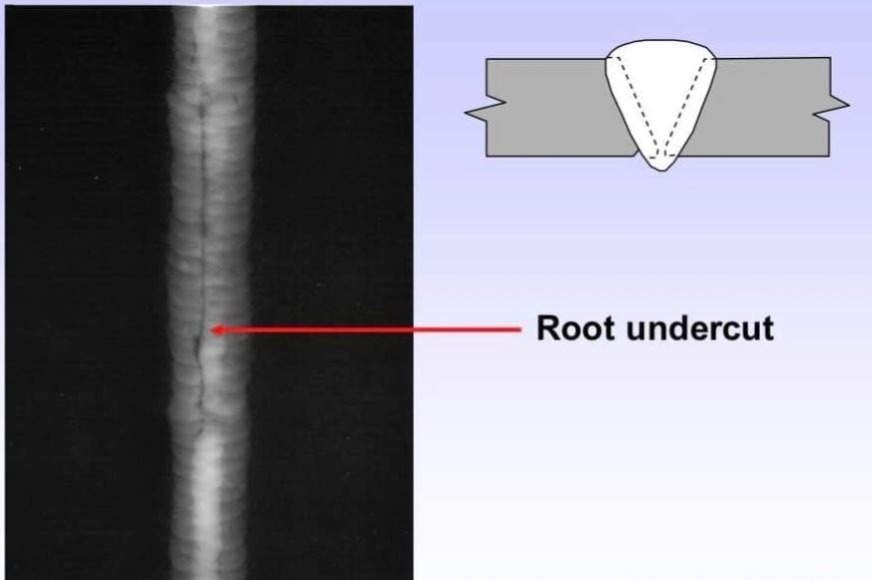Specialist Strategies for Preventing Weld Undercut Effectively
Specialist Strategies for Preventing Weld Undercut Effectively
Blog Article
Important Tips for Welders: Stopping Undercut Welding and Ensuring Stronger Weld Joints
In the world of welding, achieving strong and durable weld joints is the foundation of creating high-quality work. One usual obstacle that welders commonly run into is undercut welding, which can jeopardize the stability of the weld joint.

Comprehending Undercut Welding
Undercut welding is a typical welding issue that occurs when the weld metal stops working to effectively load the groove and causes a groove-like anxiety along the weld grain. This flaw damages the weld joint, making it susceptible to cracking and failure under stress. Undercutting can be brought on by various elements, including excessive welding current, high welding rate, improper electrode angle, incorrect electrode dimension, and inadequate welding strategy.
Among the main factors for undercut welding is a discrepancy between the welding existing and the welding speed. If the welding current is as well high or the welding rate is as well fast, the weld metal may not adequately fill the groove, causing damaging. In addition, utilizing an electrode that is as well large can lead to a comparable outcome, as the excess steel can not effectively move into the groove.
To stop undercut welding, welders must guarantee they are utilizing the appropriate welding parameters, keep a suitable electrode angle, pick the proper electrode size, and practice appropriate welding techniques. By attending to these aspects, welders can reduce the threat of undercutting and develop stronger, more reputable weld joints.
Correct Welding Method
Reliable welding technique plays a vital duty in guaranteeing the top quality and honesty of weld joints. One fundamental aspect of correct welding technique is preserving the right angle and range in between the welding weapon and the work surface.
Furthermore, a steady and consistent hand motion is necessary for developing strong and long lasting weld joints. Welders need to intend for smooth, consistent activities to ensure also circulation of the weld product. Appropriate control of the welding gun and filler material is likewise essential to accomplishing optimum infiltration and fusion.
In addition, regulating the warmth input and choosing the ideal welding criteria based upon the product being welded are crucial variables in attaining high-quality welds - Preventing weld undercut. Welders should adhere to the advised setups supplied by welding procedure specifications and readjust them as required based on the specific requirements of the task. By grasping proper welding strategies, welders can dramatically improve the strength and integrity of their weld joints
Selecting the Right Electrode
When taking into consideration the relevance of selecting the appropriate electrode in welding applications,Keeping the appropriate angle and range in between the welding gun and the work surface is fundamental. The option of electrode plays an important role in figuring out the high quality and toughness of the weld joint. Electrodes are available in numerous types, each made for particular functions and products.
Firstly, choosing the appropriate electrode diameter is crucial. Thinner electrodes appropriate for welding thin products, while thicker electrodes are much better for thicker materials and higher warmth applications. Matching the electrode diameter to the thickness of the workpiece aids attain a balanced weld.
Second of all, recognizing the product make-up of the electrode is important. Different electrodes are created for welding details materials like steel, stainless-steel, light weight aluminum, or cast iron. Making use of the correct electrode material guarantees great blend and decreases the risk of problems in the weld.
Finally, thinking about the welding setting and method is critical when selecting the electrode kind. For example, specific electrodes are much better fit for vertical or above welding positions, while others work well for flat or straight settings. Choosing the ideal electrode based on the welding technique improves the general weld quality and honesty.
Preparing the Base Steel
To make sure an effective welding process, what initial actions should be taken when preparing the base steel for welding? Appropriately preparing the base metal is essential for achieving solid and sturdy weld joints. The very first step in preparing the base metal is to cleanse it completely to remove any impurities such as rust, dirt, paint, or oil. This can be done using a cord grinder, brush, or chemical solvents. Furthermore, any existing weld material or deposit from previous welding should be gotten rid of to make certain a tidy surface for the new weld.

Carrying Out Post-Weld Evaluations

After performing these analyses, welders should contrast the outcomes against industry requirements and job needs to make certain that the weld joint meets all needed standards. Any kind of discrepancies or insufficiencies discovered during the post-weld examination should be promptly addressed through suitable corrective steps to guarantee the weld's honesty. By faithfully executing post-weld examinations and without delay resolving any kind of concerns, welders can support the quality and integrity of their job, inevitably contributing to the safety and security and Your Domain Name long life of the bonded frameworks.
Conclusion

To conclude, stopping undercut welding and guaranteeing stronger weld joints call for a mix of proper welding technique, picking the appropriate electrode, preparing the base steel properly, and conducting post-weld examinations. By comprehending the sources of undercut welding and implementing the essential safety measures, welders can produce premium weld joints that fulfill market requirements and make certain the structural integrity of the welded parts.
Undercut welding is a typical welding problem that takes place when the weld metal falls short to correctly load the groove and results in a groove-like anxiety along the weld grain (Preventing weld undercut). Undercutting can be created by different factors, including too much welding current, high welding rate, inappropriate electrode angle, inaccurate electrode dimension, and bad welding technique
One of the primary factors for undercut welding website here is an imbalance in between the welding current and the welding speed. If the welding current is also high or the welding rate is as well fast, the weld metal might not sufficiently load the groove, leading to undercutting.Preserving the proper angle and distance between the welding weapon and the workpiece is essential when taking into consideration the significance of selecting the appropriate electrode in welding applications.
Report this page